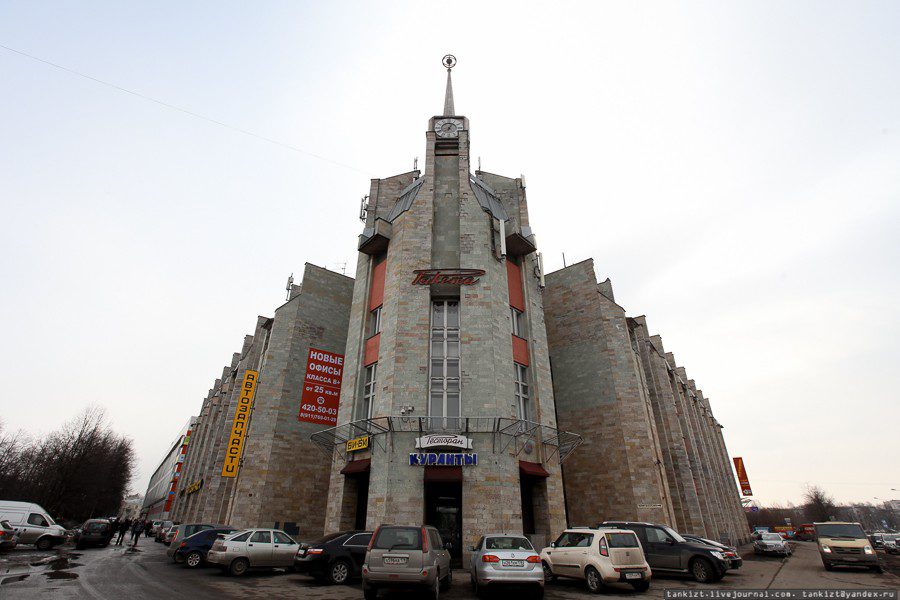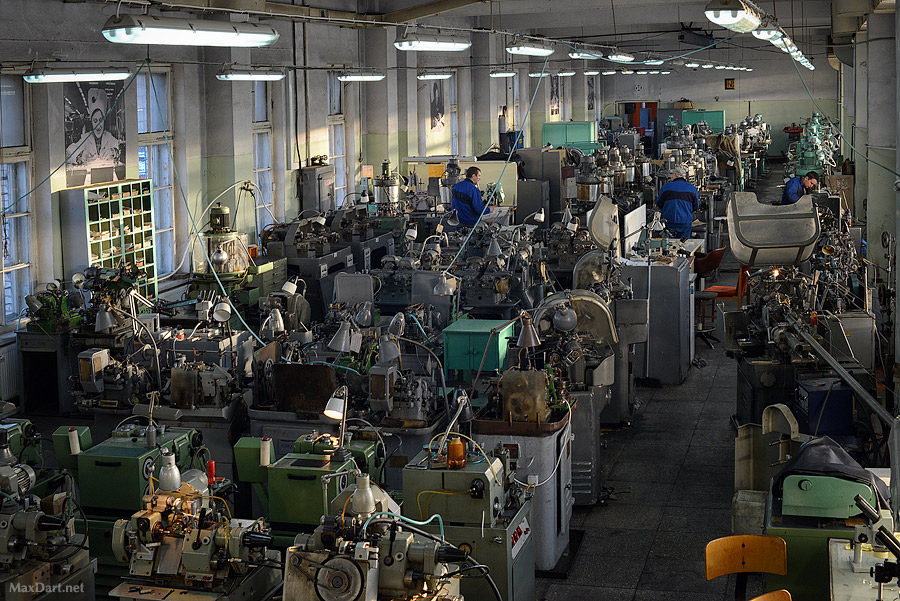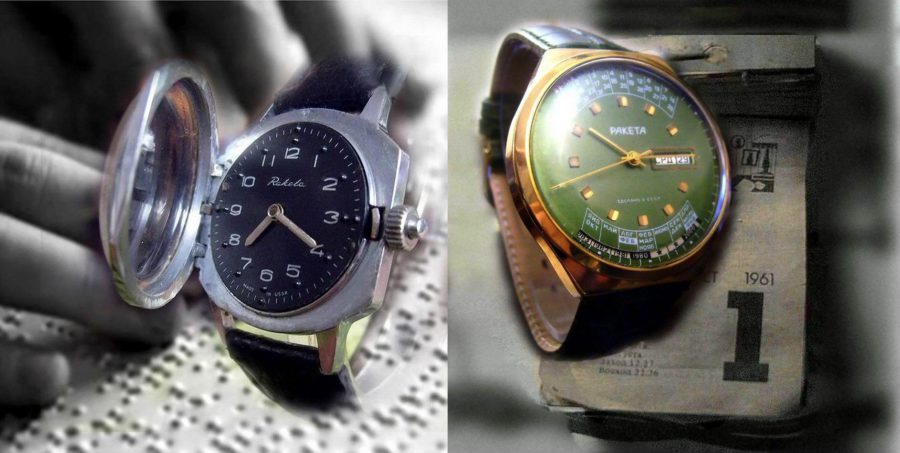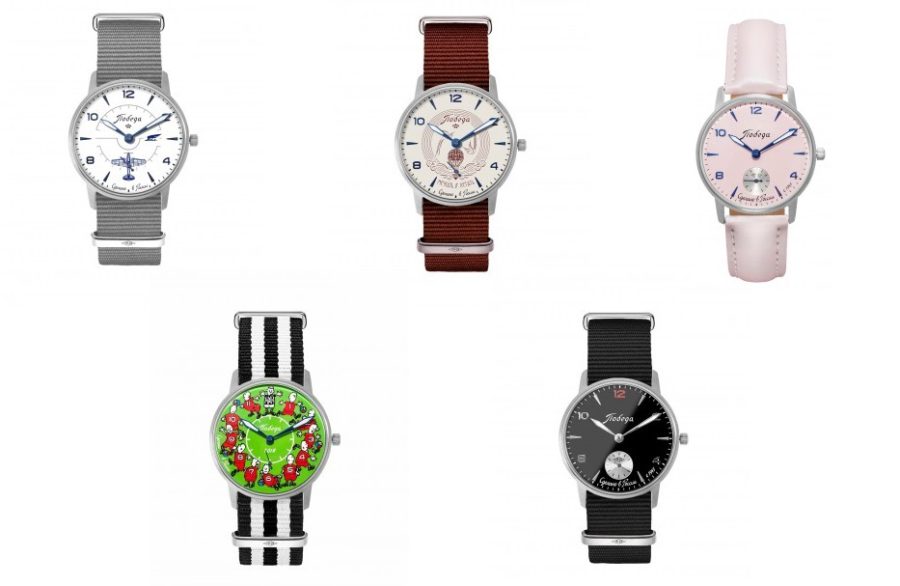The history of watches under the Raketa brand, yesterday and today through the prism of personal memories. Let's see the products too.

Photo tankizt.livejournal.com
Personal memories of the PCZ
It is rather difficult to recall the time when the author's foot entered the territory of the PCZ plant (Petrodvorets Watch Plant) back in 1992. This is understandable, because this was not done of their own free will, but within the framework of the necessary development of the practice of the “CPC” of the school curriculum. I studied in the 10th (out of 11) grade, and the thought that it was necessary to work at the plant every working day for 4 hours all June made me feel a little cold, squeezed and shaken.

Typical school fashion from the early 90s. Sweater-sports-sweater-T-shirt-sweater =)
The first fruits of the capitalist revolution – Turbo chewing gum, Alice leatherette ties and Coca-Cola lemonade no longer aroused the former enthusiasm, I just wanted to relax in the summer, ride a bike with friends, or even wave to the village.
Instead, a lump came up to his throat, and a foot stepped into the territory of the plant. It was a fun time, and the funniest thing was that my friend and I were given the machine, and we perfectly performed monotonous work to the hum of electric motors and obscene ditties, which we ourselves sang. Then we didn’t know that the head of the shop, sitting behind the wall, could hear them perfectly, but she didn’t even lift a finger to pull us down, she and her assistants liked them so much. Our task was to get an iron box with blanks for the base of the clockwork (inside there was a piece of paper with their number), sit down at the mill with a horizontally rotating mechanism and insert parts into the fasteners, onto which drills were then pounced on top and made 13 holes of different caliber.

A month has passed in about such a workshop, 4 hours a day
Having passed a full circle, the mill did not spit out the workpieces in automatic mode; it was necessary to manually remove them and throw them into another box. The work seems to be simple, but it was necessary to follow – the drills often broke, and the sooner you discover this fact, the sooner you will replace the drill and finish drilling the entire batch. Simple work in a cheerful team led to the fact that I did not want to leave the factory at all, and we did not become particularly tired in 4 hours. The money given out for the work covered the needs of the growing body in lemonade, but there was not enough of it for anything else (inflation was frenzied), well, except that they also gave rise to a sense of pride of an honest hard worker. That's all that is remembered about that PCZ of the early 90s.
The old PCZ was state-owned, bankruptcy proceedings began around 2000-2001, the buildings of the plant were handed over to third-party companies and were used as shops and warehouses. Here's a sad end.
Soviet watch 'Raketa'
Knowing the inside of the old Raketa watch, I can fully say that it was completely metal, no plastic bases or, God forgive me, gears. The nomenclature was the widest: men and women, children and school – everyone wore a watch.

The design was classic and there were watchmaking workshops in every district and delighting residents with low prices. It cost 60 kopecks to replace a broken glass of a wristwatch, with which I congratulate all of us.
Modern plant 'Raketa'
The second birth of the Petrodvorets Watch Factory must be considered the year 2009, when foreign watchmakers (who had experience in Rolex, Breguet and Hautlence) and the Russian model Natalia Vodianova took up its revival. Funny, huh? The deceased plant was pulled out of the ashes by the tip of the hour hand by a fashionable model.

In 2013, when the new Raketa watch appeared at international exhibitions, the design of which Natalia Vodianova had a hand in, the Spiral and Balance specialist (they say, the most difficult part of any watch) Jean-Claude Kene (Rolex, Franck Muller , creator of Dimier).

Jean-Claude Quene, photo by Chronoscope
Here is part of his interview with Chronoscope, first impressions of the factory visit:
'There are an incredible amount of ingenious engineering solutions here. There are amazing machines! I worked at Rolex and we had the best equipment. So, on the “Raketa” there is a machine that performs the same tasks as the one that I used on Rolex. The Russian works with the same precision and the same performance, but it is no larger than a sewing machine, and the Swiss was the size of a car! They also showed me the workshop where the stones are placed. I expected to see several workers with their sleeves rolled up. But I found only one employee, and all the stones were inserted by machines. It is surprising!'.
Interest grew into fruitful cooperation, which led to the emergence in 2014 of a new (the first since the USSR) proprietary movement, 100% authentic and made from local materials – 'Raketa-Avtomat'. When we talk about mechanical watches, then if you do not have your own movement, you are an assembly shop, not a full-fledged manufacture. There is something to be proud of.

One of the first new mechanisms 'Automatic rocket'
In 2015, a huge clock appeared at the Central House of Music 'on Lubyanka' – yes, that's right, they were made at the Raketa plant, and many consider this movement to be the largest in the world.

In addition, the plant serves the interests of sea and air transport, accepts orders for the manufacture of thin parts.
That's all about the history of the plant, I propose to go to the products and compare them with competitors.
Modern clock
The cheapest watches cost 6,500 rubles. In fact, this is a basic model with a typical waterproof case (5 ATM), quartz movement and organic glass. The diversity of the offer is achieved by using different graphics on the dial and the colors of the textile strap. You can find both military-sports themes and women's pink design.

In the upper price segment (120,000 rubles) there is a proud sailor watch. The phrase 'If navigational instruments fail on a ship, the dial for 24 hours can be used as a solar compass. It is enough to point the hour hand towards the sun and the “24” mark will point to the North '. Other highlights include a stainless steel case, sapphire crystal, automatic rocket movement and 20 ATM water resistance.

All other watches, quartz and mechanical, male and female, strict and foppish, fit in the middle. Including limited edition watches, such as the Tu-160, whose ads have recently interrupted the air of TV channels and YouTube. Under the disturbing sounds of advertising, I want to shout: 'The Kraken is free, save yourself who can!'.
What can be said for sure about the Tu-160 is that for 85,000 rubles the buyer gets a watch in an excellent box.

Alas, but the factory does not make smart watches, remaining in the paradigm of mechanical life. With whom does the Raketa brand have to fight in the domestic market?
Competitors and questions
Does the domestic plant have competitors, which defeated the consequences of perestroika? The question is rhetorical. For me, it’s not like that, but this is too personal an opinion, so I don’t presume to judge.
And what do you think? What watch do you prefer? Is the place where the watch is made and its history important? Are there any situations in your life when a mechanical watch is a must-have item, apart from weddings and funerals?
